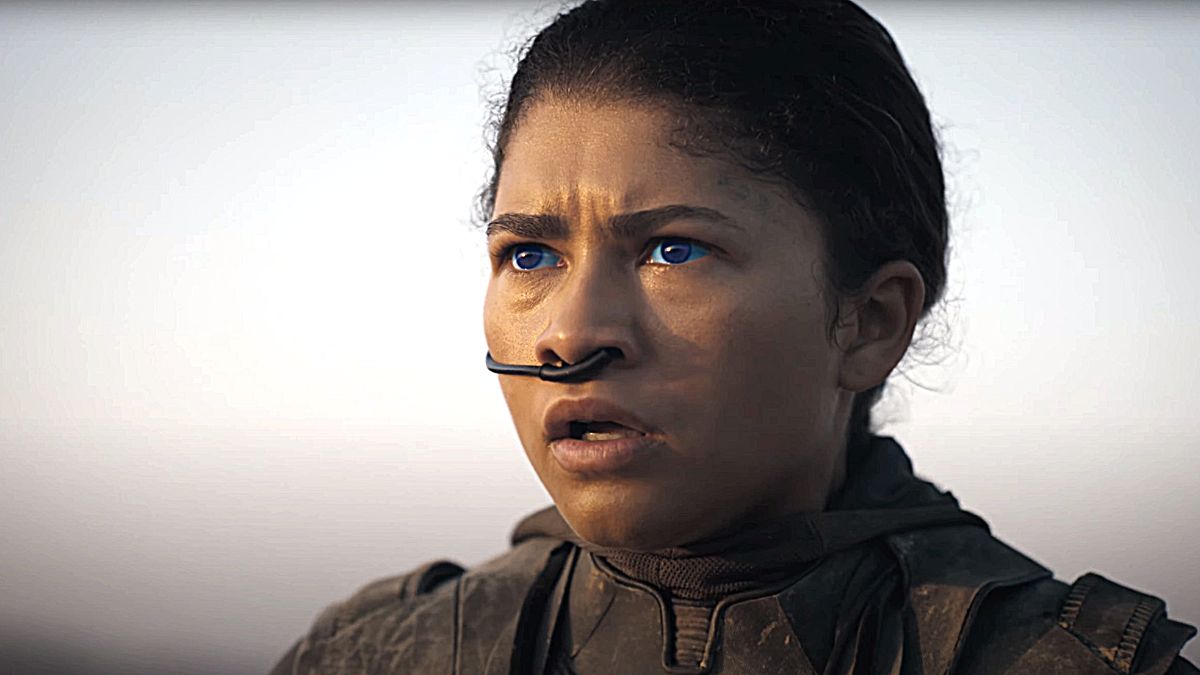
Denis Villeneuve’s epic continuation of 2021’s Dune is one of the greatest productions of the century and an will become undeniable piece of cinema history. In Dune: Part Two, Timothée Chalamet’s Duke Paul Atreides finally meets his fate.
Across a wild ride of political intrigue, religious traps, and sandworms, the sheer scale of Dune: Part Two is an experience that only cinema can provide and deserves to be watched on the biggest screen you can find. It picks up right where Dune left off and works better as one-half of a giant over-five-hour-long movie than a stand-alone piece, but nevertheless delivers insane levels of tension, complicated subject matters, and incredible performances from the star-studded cast led by Chalamet and Zendaya.
How does Dune: Part Two end?
There are many moving pieces in Frank Herbert’s science-fiction space opera and they all come to a boiling point in the last hour of Dune: Part Two. Paul successfully integrated the Fremen after fleeing from an attack on his family, as his mother Lady Jessica and her powerful Bene Gesserit sisters continue to spread the prophecy of the Kwisatz Haderach, a powerful super being that the Arrakis natives adopt as a Messiah called Mahdi or the Lisan al Gaib (different words for similar concepts).
The Fremen believe Paul’s knowledge to be useful in their fight against colonizers’ exploration of Arrakis for the powerful drug known as spice, and he grows among their ranks. The Padishah Emperor Shaddam IV, played by Christopher Walken, hears of the rise of a powerful Fremen soldier called Muad’Dib, unaware that this is the name Paul has adopted as part of the Fremen and that he survived the attack orchestrated by him and the House Harkonnen to drive the Atreides from Arrakis (as portrayed in 2021’s Dune).
Under heavy fire from the ruthless Harkonnen successor Feyd-Rautha (Austin Butler), Paul, Lady Jessica, and the Fremen travel to the south of Arrakis, believed by foreigners to be uninhabitable. There, the final prophecy comes true as Paul drinks the Water of Life (a poisonous liquid extracted from sandworms) and survives, reaching his final clairvoyant form. The south is also where the Bene Gesserit have dedicated most of their efforts to spreading religious fanatism that worships the Kwisatz Haderach/Lisan al Gaib. When everything they had prophesized is confirmed by Paul’s actions, the Fremen become loyal followers, believing he will lead them into Paradise.

Despite fighting his fate for a while, Paul succumbed to it in the end, playing into the Fremen’s religious beliefs which he knows to be fabricated and manipulated. Chani, who sees religion as a tool to enslave the vulnerable, sees this as a betrayal of her and her people’s trust but is powerless in the face of her fellow Fremen’s blind adoration of their so-called Messiah.
Together, and backed by the House Atreides’ nuclear power, Paul and the Fremen take the Emperor hostage and kill most of his army and most of the Harkonnen leaders. Paul’s end goal is to sit on the throne and rule over the Empire by marrying Shaddam IV’s daughter Florence Pugh’s Princess Irulan and betraying Zendaya’s Chani.
Instead of killing the old Padishah Emperor, Paul gives him the option of choosing a champion to fight in his place. Feyd-Rautha volunteers and comes close to killing him but the Duke manages to overpower him to become the new emperor. Betrayed, heartbroken, and angry over Paul’s abuse of the Fremen’s gullibility, Chani leaves and faces the desert alone on a quest of her own, which we will only know more about if Dune Messiah is eventually produced — a scenario which is looking more likely by the day following Dune: Part Two‘s incredibly positive early reception.
‘Dune: Part Two”s chilling ending, explained
Updated Flash Report
0 Comments